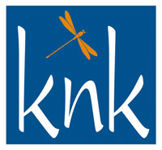Once the streets of most towns were littered with them. They were different every day and for big occasions, they hung from lampposts. They were powerful weapons in the endless quest to sell more newspapers. I am talking, of course, about newspaper bills.
Nothing sums up the power of words better than a well-crafted bill. Five short words scribbled on a sheet of paper that make people change their minds - and walk into a shop and buy a newspaper. And, unlike most marketing campaigns, they could change each day, giving a sense of urgency. What other industry had the opportunity to get several different messages on the streets every single day?
But in these hi-tech days, where newspapers use social media to 'drive traffic' and where all journalists understand SEO, is the humble bill still relevant? The nationals dispensed with bills years ago. But what about the regionals? They need every trick available to give their titles longevity, so surely a good bill can still work. I asked a range of editors and am happy to report that in most towns, bills are alive and kicking. Weekly papers in particular are avid bill writers. Lisa Templeton, editor of the North Devon Journal, (the paper that gave us the classic bill: Drunk torched peanut bag and ‘made love to ambulance’) uses them extensively. “We have a large patch comprising readers who focus on patch-local issues and bills are an excellent way of highlighting these and tempting readers to pick up the paper,” she says. "We have many more casual buyers these days and so bills along with front pages are essential.” The reporters write the bills and then Templeton tweaks them with the sales manager also weighing in.
The fourteen titles overseen by David Bourn, editorial director at Scottish Provincial Press, are also keen on bills.
He says: "Editors work closely with the newspaper sales people to ensure every retailer has a bill pertinent to their locale. We use them as part of a package of digital and non-digital marketing tools not just in isolation. They have to be good though and tease people into wanting more."
Most of the big dailies also continue to use bills.
I spoke to the editors of the Yorkshire Post, The Northern Echo, the Hull Daily Mail, the South Wales Evening Post, the Sunday Post, the Evening Telegraph in Dundee and the Liverpool Echo … and all still use bills. In my mini-survey, only the Oxford Mail has stopped.
Neil Hodgkinson, editor of the Hull Daily Mail, says: "The 'A-Board' is still the best way to promote your wares outside a newsagent or shop. More importantly, it gives you strong presence in your communities. It reminds people you are still there. Not being there and you run the risk of unconsciously suggesting that you no longer care, or have given up.
"As the number of casual sales readers grows year by year, the bill is still a key way to catch the eye, alongside the front page headlines and promotional blurbs. Whether or not it increases sale is no doubt open to debate but they certainly can't do any harm and, for a minimal production cost in the greater scheme of things, why run the risk of not doing them?”
Donald Martin, editor-in-chief at DC Thomson and Aberdeen Journals Newspapers, agrees: "Great content still sells but bills nowadays are only one small part of the marketing mix needed to make any significant difference to circulation figures. They do however help promote the brand and for local titles they can highlight the strength of editionised coverage.”
At the Liverpool Echo, bills have been scaled down a little. Editor Alastair Machray says: “They have a cost attached as you need an operative to put them up. So the cost challenges mean we don't plaster everywhere any more.
He argues: "It is almost impossible to break a story in print. Even if you ring-fence and jealously guard an exclusive, it is picked up and distributed via social media minutes after the first copy is off the press and long before it arrives in the newsagent.” The Echo still uses bills though, sometimes to catch the lunchtime crowd, to push print-only offers and souvenir editions (‘Cilla - her life in pictures’ recently went down well) and to flag up something newsy in a localised area.
Some papers use traditional bills in an electronic format on Facebook and Twitter. The Yorkshire Evening Post puts out six traditional bills on Twitter each evening to promote the following day's paper. But The Northern Echo, a pioneer of electronic billing, has now abandoned it. Editor Peter Barron says it was "a nice idea but I don't think you can compete with Facebook posts to promote the paper and drive traffic to the website".
Interestingly, none of the editors have evidence that the bill actually works … only anecdotal evidence from retailers. Anyway, for those still persisting with the traditional bill, here are my tips to make sure you are doing it properly.
1. Understand the purpose of the bill
It is to persuade a casual reader to buy the paper. You won’t do that if you stick five bland words on a poster.
2. Tease the reader
Leave a key question unanswered. Tell them it’s a well-known publican who has been up to no good - but not which one.
3. Understand who the bill is aimed at
Don’t put the One Direction poster in an area dominated by pensioners.
4. Use place names
But remember, a place name will not save a boring bill.
5. Boring bills have a detrimental effect
If people think that’s the best you have, they will decide not to buy the paper.
6. Think bills at the beginning
The process starts with the reporter who will know if the story is likely to sell.
7. Keep them short
Readers can take in about five, maybe six, words at once.
8. Don’t forget the non-editorial stuff
Free beer, free tickets to the races, money off Tesco vouchers, will all trigger a sale.
9. Keep it fresh
People will not buy a paper for something they already know.
10. Ask how and why
Why I’m changing sex – Oxford teacher; How child killer was caught. This style can be effective.
11. It’s OK to ask questions
Is this the biggest crook in Newcastle? Are these the worst dressed men in Cambridge? These would work even better on a picture bill.
12. Names sell papers
We live in a celebrity culture – and that includes local celebrities.
13. Use words that build pictures
Words such as boost, rap, shock, plans and probe tell us little.
14. A picture can work wonders
Adding pictures can be a real attention grabber.
15. Have impact but be legible
A spidery handwritten scrawl isn't going to stand out. Lower case can be easier to read than caps.
16. Location, location, location
Where the bill goes is a key factor – make sure people can’t miss it. Go where the crowds are.
17. Don’t give the game away on Page 1
If the bill has teased the reader off the street, don’t put the answer in the splash headline. Keep on teasing.
18. Don’t con the reader
If you're over-larding stories, the readers won’t fall for it for long.
19. Watch out for legals
A bill can be libelous or in contempt, even if the story it refers to is not.
20. Watch out for double meanings
I still have a copy of my favourite: Princess Anne in Bath – pics.
21. Don’t leave old bills out there
It confuses the reader and destroys credibility. Change them every day, or every week. If you are a weekly, date them.
Finally, I asked the editors to name their favourite bill. Alastair Machray says: “It goes back to 1968 and was still talked about in awed tones at the Sunderland Echo when I joined in 1979. It was the bill for the Saturday Football Echo (Pink), and read: ROKER IN 8-GOAL THRILLER. Sunderland had lost 8-0 to West Ham. Geoff Hurst got six."
And the final word to David Bourn: "When I was in Newcastle, ‘Shearer signs for £15m’ added 40,000 sales on the day!”
Five words … 40,000 sales. That’s how powerful the right words can be.












